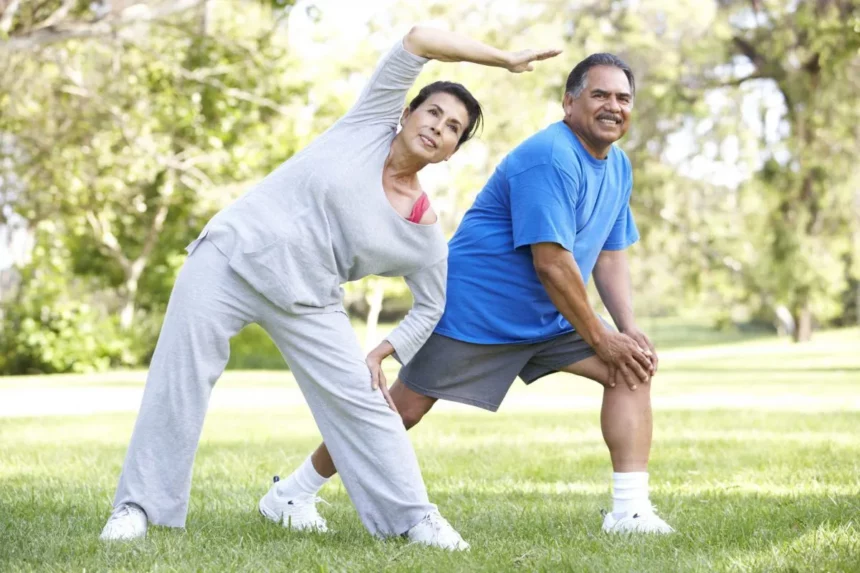Exercise has so many benefits, but the biggest one is that it makes it easier to control your blood glucose level. People with type 2 diabetes have too much glucose in their blood, either because their body doesn’t produce enough insulin to process it, or because their body doesn’t use insulin properly (insulin resistant).
In either case, exercise can reduce the glucose in your blood. Muscles can use glucose without insulin when you’re exercising. This means it doesn’t matter if you are insulin resistant or if you don’t have enough insulin. When you exercise, your muscles get the glucose they need, and in turn, your blood glucose level goes down.
If you’re insulin resistant, exercise actually makes your insulin more effective. Your insulin resistance goes down when you exercise, and your cells can use the glucose more effectively.
Exercise can also help people with type 2 diabetes avoid long-term complications, especially heart problems. People with diabetes are susceptible to developing blocked arteries (arteriosclerosis), which can lead to a heart attack. Exercise helps keep your heart healthy and strong. Plus, exercise helps you maintain good cholesterol—and that helps you avoid arteriosclerosis.
Before You Begin…
1. Talk to your Doctor – Many people who are diagnosed with type 2 diabetes are overweight, and the idea of exercising is particularly daunting. This is why its critical that you consult your doctor to create a reasonable exercise plan best suited for your health. Your doctor will be able to check your heart health, which is particularly important if you already have blocked arteries or high blood pressure.
2. Set Realistic Goals – If you have never exercised before or have not been frequent with any kind of physical activity, you will have to start slow and gradually increase the amount and intensity of the workouts. Allow yourself time to build up to a steady, challenging exercise routine. And be okay with going slow—it’s better for your body in the long run.
3. Hydrate – Remember to stay hydrated by drinking water and always keep a low carb snack handy if you experience symptoms of low blog blood sugar glucose.
4. Monitor Blood Sugar – It is also a good idea to check your blood sugar glucose with your glucose meter before and after exercise to make sure you are in a safe range.
Recommended Exercise for Diabetics
Being diagnosed with type 2 diabetes does change your life, but making small changes to your routine can help you incorporate more physical activity into your day. You need to do what works for your body and your lifestyle. Here are some suggestions below for what types of exercise to do.
- Walking
- Yoga
- Jogging/Running
- Tennis / any other outdoor games under supervision
- Badminton
- Swimming
- Biking cycling ( more related word than biking)
- Any dance forms/hobbies

You should aim to get at least 30 minutes of aerobic exercise most days of the week. If you think that you can’t find 30 minutes, you can break up the exercise into chunks—10 minutes here and there. Build up to 30 minutes gradually.
Also, stretch your creativity when it comes to fitting in exercise. Take a walk at lunch. If you have a dog, then get the whole family out after dinner to take the dog for a walk. Taking the stairs is also a good exercise. If you have to go to a store nearby, avoid the temptation to jump into your car or two-wheeler. Take a walk instead.
You need to find a way to exercise that you actually enjoy because if it’s not fun, you won’t do it. It’ll be harder to stay motivated, even if you know all the benefits of exercise. Consider signing up for a group class at the gym, or find a friend to walk or run with. Having someone else exercising with you does make it more fun and motivating.
Make a commitment to exercise; make it a priority. Your long-term health depends on it. As tough as it may be to find the time or to motivate yourself to exercise, keep at it. It will help you lose weight (if you need to do that), and it will make your body more efficient at using its insulin and glucose.








